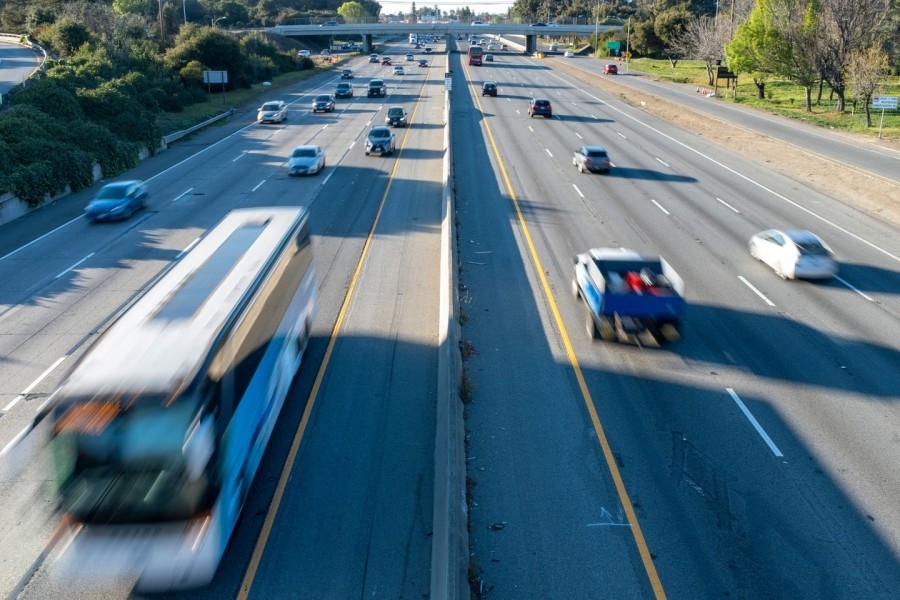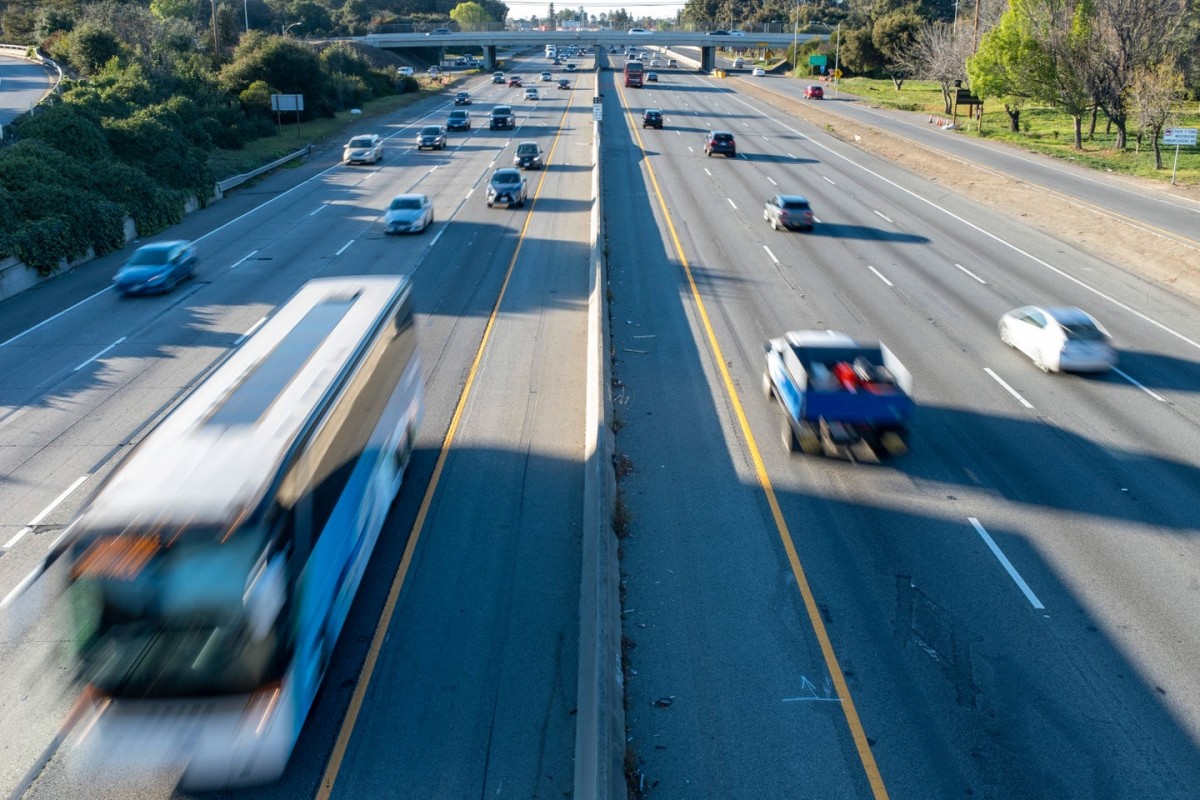
 Palo Alto communiters and/or you. (Photo Courtesy of Yichuan Cao/Reuters and Slate)
Palo Alto communiters and/or you. (Photo Courtesy of Yichuan Cao/Reuters and Slate)
|
Ever since the coronavirus locked down offices and turned Zoom into the world’s conference room, a debate has raged about whether, once the pandemic is over, cities will have been radically altered or will appear largely untouched. But most everyone seems to agree on one thing: An increase in teleworking is here to stay.
Even a new norm of working remotely for a day or two per week could have a major impact on transportation networks after the pandemic ends. Looking ahead, analysts have predicted a sharp decrease in post-pandemic driving, leading to a welcome reduction in greenhouse gas emissions.
But what if people who work from home actually drive more than if they’d gone to the office? It may sound counterintuitive, but such situations are entirely possible. Indeed, rather than being an environmental panacea, remote work could lead to as much driving as before, or even more. That’s been one surprising finding of researchers who have compared the travel of pre-pandemic commuters with teleworkers.
Imagine a commuter—we’ll call her Sheila—and assume that in pre-COVID times, she drove her car 10 miles each way from her home in the suburbs to her workplace downtown. Once she parked at the office, she worked out at the building’s gym before sitting down at her desk. At noon Sheila might walk to the drug store to pick up a prescription, or ride transit a couple stops to meet her friend for lunch. She would return to her office for the afternoon, stopping by a grocery store on her drive home. During this day Sheila drove 10 miles on her way to work and then 12 miles on the way home (going a bit out of the way to buy groceries)—22 miles in all.
Then the pandemic hit, and Sheila worked at home. Seeking to minimize interactions with strangers, she avoided crowds and had groceries and essentials delivered to her house. But when the pandemic ends, finally, she’ll resume visiting stores and meeting other people, and her employer will blow the dust off the cubicles and reopen the office. For now, Sheila will return to work in person only three days per week, working from the ‘burbs during the other two. How might her teleworking travel differ from when she commutes in person?
Sheila obviously won’t be driving to or from work if she stays at home, but she’ll still take many other trips. Since she can’t exercise at her office, she instead drives to a gym four miles from her house. A lunch meeting is five miles away, and she combines it with a pharmacy run—generating a trip of 12 miles. At the end of the workday, she makes a final trip to a grocery store three miles away. If you do the math, she has now driven a total of 26 miles—more than when she went to the office.
For an extra twist, imagine Sheila has a neighbor named Bob who in pre-pandemic times would commute to work by walking to a commuter rail station a half-mile away. He now becomes a post-pandemic teleworker, using his car to run errands or meet clients during the workday—trips that he used to do by walking or transit when he worked downtown. Teleworking has led Bob to increase his driving even more than Sheila. He might eventually convince his family to get an additional car—which suggests still more future driving, because people who obtain a car tend to use it.
These are hypothetical scenarios, but they highlight several distinctions between working at home and at the office. First, people working from home are unlikely to stay there all day after the pandemic ends. Under normal circumstances, teleworkers tend to travel quite a bit—and the places they want to reach are likely further away than if they were at the office. For those working downtown, “everything is close by, so they don’t need to drive 30 minutes to a shopping mall,” says Rongxiang Su, a Ph.D. student in geography at the University of California—Santa Barbara who has studied teleworking. And destinations close to a downtown worksite are probably more reachable by walking, biking, or transit—further limiting vehicle miles traveled, or VMT.
|
|
Over time, teleworking could lead people to spend even more time sitting behind the wheel. What if Sheila decides after a year of part-time teleworking that she can stomach a longer commute to the office, since she only has to do it three times per week? That leads her to trade her suburban home for a bigger one in a sparsely populated exurb where destinations like restaurants or stores are further away (and alternative modes, like transit or biking, are unlikely to be as convenient). “After COVID we’ll have people relocating farther out,” says Patricia Mokhtarian, a professor at Georgia Tech’s School of Civil and Environmental Engineering. “When they do commute, they’ll be traveling longer distances.” In a 2005 study, Mokhtarian and her colleagues concluded that teleworking can modestly reduce driving, but she says the effects dissipate as teleworkers move further from the central city.
Mokhtarian expects a big leap in teleworking after the pandemic ends. “We could see a doubling or tripling compared to the amount before COVID,” she says. But she doesn’t believe even that would reduce vehicle miles traveled. “Doubling, I doubt it would reduce driving,” she told me. “Maybe tripling might show a little bit of an effect.” That’s actually a more bullish assessment of teleworking than several other pre-pandemic studies, which found that remote workers drive more than in-person commuters.
Su, a co-author of one such study, expects teleworking to lead to more post-pandemic driving. “My guess is that telecommuters post-COVID will still produce more VMT,” he says. “It’s kind of like a human habit. If you are already used to a schedule, you’ll probably follow that when everything opens back up again.” In other words, if you’ve grown accustomed to working out at your house in the morning, you’ll probably still do so when the pandemic ends—only now you might drive to a gym before returning home to work remotely.
Teleworking’s impact on VMT has major implications for the environment, because in the United States, transportation is the biggest source of greenhouse gases. Reducing automobile trips helps fight climate change, so it’s worrisome if teleworking doesn’t affect total driving (or if it pushes the needle in the wrong direction). Worse, teleworking seems especially dangerous for public transportation agencies, which have seen a sharp decline in passengers during the pandemic. Teleworkers obviously don’t need to use transit to reach their worksites, but their remaining trips—often taken during off-peak hours and outside the downtown core—are relatively difficult for transit agencies to serve. Such trips are even tougher for transit to accommodate if teleworkers move further from the urban core. “For a long time I thought we should all be supporting telework because it’s good for the environment,” says Mokhtarian. “Now I scratch my head and ask, ‘What about public transit?’ ”
If there is a silver lining in teleworking inducing more driving, it’s that we can probably accommodate teleworkers’ travel with the existing road network, without requiring further expansion. That’s because teleworkers’ journeys often consume excess highway and street capacity, occurring outside of rush hour and away from major commute corridors. And because the transportation network is built to accommodate peak commute volumes, even slightly fewer rush-hour trips would reduce the need for new or wider highways. For that reason, President Joe Biden’s emphasis on fixing existing roads rather than building new ones seems wise, regardless of whether teleworking ultimately increases overall driving.
But that’s unlikely to reassure those concerned about climate change, who have hoped teleworking would provide a convenient way to permanently reduce driving. Mokhtarian doesn’t have her hopes up. “I’ve got clippings in my files from ‘extreme’ events going back to the 1984 Los Angeles Olympics, including the SARS pandemic, infrastructure failures, and transit strikes. It’s always promoted as a way to manage traffic—thank the Lord for teleworking,” she says.
“When the thing is over, traffic bounces right back.”

 Mokhtarian
Mokhtarian